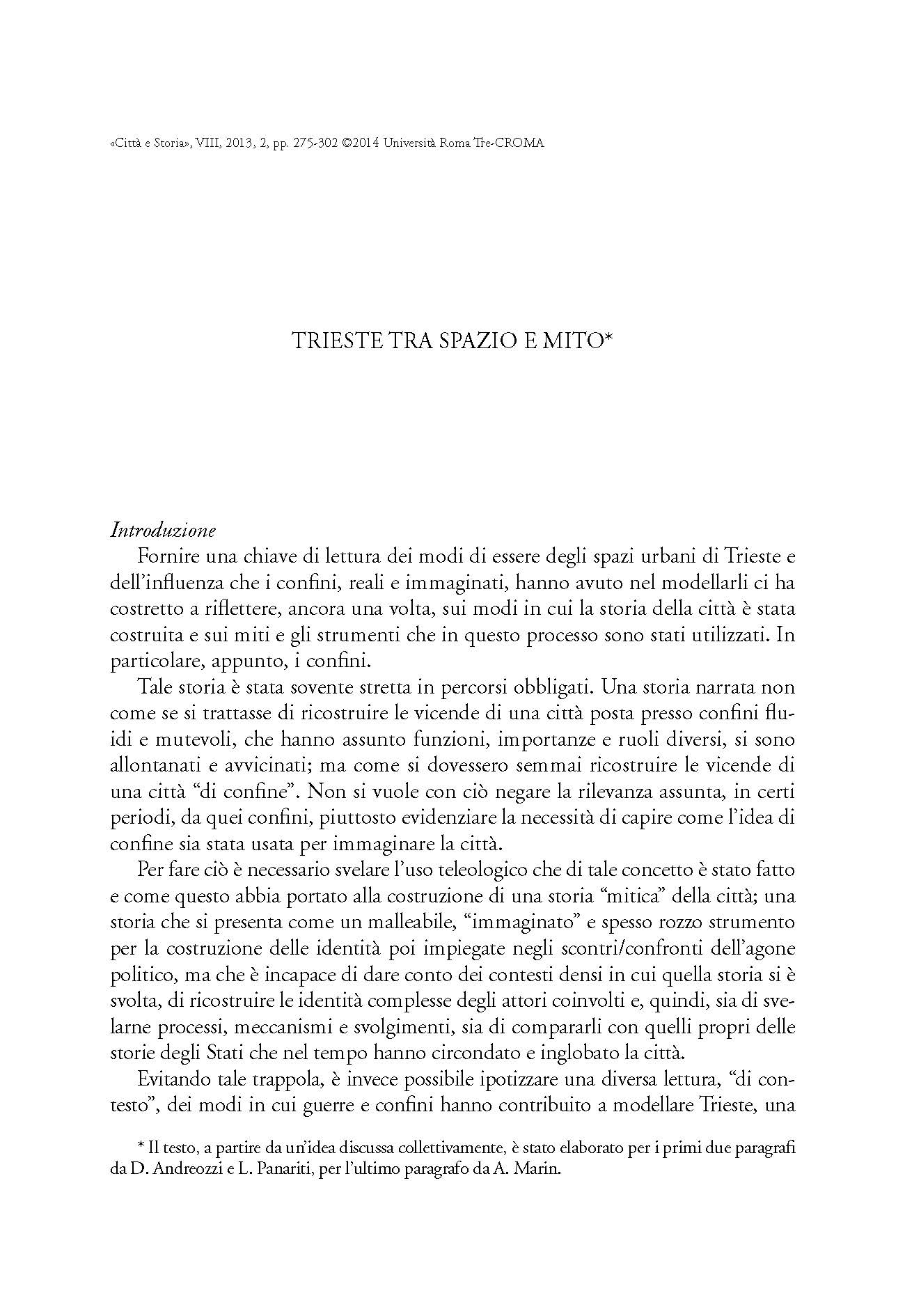Trieste tra spazio e mito
6,00 €
The physical and symbolic construction of Trieste’s urban spaces is the result of a historical process that is as complex as it is tormented. The outcome of such process is landscape rich in contradictions and characterized by spaces that offer ambiguous interpretations and send out multifaceted messages. A landscape, moreover, often described using teleological narrations, used as tools in the final confrontations in the political competition. The highlighting of the fundamental factors and mechanisms of such construction and of their stratification through time, as seen from different points of views and with crossed glances, reveals itself to be a way to dissolve the ambiguities and the pluralities of the ways of interpreting and their meanings. Furthermore it strives to be some form of contribution in order to hypothesize an interpretation of “context” able to deal with the contradictions and challenges coming from the complex and multiple myths, the golden age and the border lines (of both time and space) utilized in order to imagine the city.
The physical and symbolic construction of Trieste’s urban spaces is the result of a historical process that is as complex as it is tormented. The outcome of such process is landscape rich in contradictions and characterized by spaces that offer ambiguous interpretations and send out multifaceted messages. A landscape, moreover, often described using teleological narrations, used as tools in the final confrontations in the political competition. The highlighting of the fundamental factors and mechanisms of such construction and of their stratification through time, as seen from different points of views and with crossed glances, reveals itself to be a way to dissolve the ambiguities and the pluralities of the ways of interpreting and their meanings. Furthermore it strives to be some form of contribution in order to hypothesize an interpretation of “context” able to deal with the contradictions and challenges coming from the complex and multiple myths, the golden age and the border lines (of both time and space) utilized in order to imagine the city.

